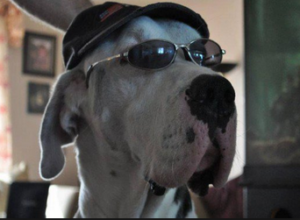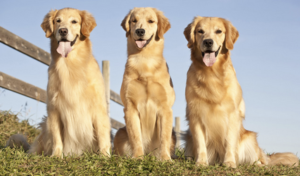Reduce Your Dog’s Cancer Risks
You can’t prevent cancer – at least not yet – but you can stack the odds in your dog’s favor. WDJ suggests four ways you can lessen the odds of cancer in your dog.
Veterinary oncologists say that cancers in humans and in dogs are incredibly similar, in terms of growth and prognosis. That’s good news for both species, as research of human or canine cancer may yield insight about and new treatments for this deadly disease. In addition, many of the tactics that reduce the incidence of cancer in humans, veterinary oncologists say, can be used by pet owners to reduce the chances that their dogs will develop the disease. Here are four things you can do to help prevent cancer in your dog:
1. Reduce Your Dog’s Exposure to Carcinogens
The word “carcinogen” is commonly defined as something that causes cancer. In reality, a carcinogen doesn’t cause cancer; it sets the stage for cancer to develop.
“Cancer relies on gene mutation (abnormal cell growth),” says Dr. Gerald Post, a board-certified veterinary oncologist and owner of the Veterinary Cancer Center in Norwalk, Connecticut. “We’re all born with some basal level of cancer risk, but viruses, diet, environment all interact to raise or lower that risk,” he says.
Carcinogens impair a dog’s gene-replication devices somehow, setting the stage for cancer to develop. Some carcinogens actually alter the DNA in the body, while others cause cells in the body to divide too quickly, which opens the door for DNA abnormalities and, therefore, cancer growth.
The list of known human cancer-causing carcinogens is long, with an even longer list of suspected carcinogens. While a dog’s susceptibility depends in part on his genetic makeup, prolonged or frequently repeated exposure to these elements can result in those worrisome cellular changes. In other words, walking by a lawn with pesticide on it isn’t as risky as playing daily on that grass. Scope out your home and backyard for possible contaminants and remove or limit your dog’s exposure to them. You can see a full list of human carcinogens at the American Cancer Society.
That said, pesticides are at the top of the list of concerns for your dog, and are one of two proven causes in pets, Dr. Post says. The chemical “2,4-D,” which is found in some common herbicides, has been linked to lymphoma in dogs. Keep your dog away from herbicides at least until the product has dried.
The other proven pet carcinogen is secondhand smoke. It’s linked to cancer in cats, as it settles on the cat’s coat and the cat licks it off, ingesting it. Dr. Susan Lana, a board-certified veterinary oncologist and chief of clinical oncology at Colorado State University’s Flint Animal Cancer Society, suggests that pet owners who smoke avoid doing so in the home, as the smoke settles on pets.
Long-nosed dogs living in a pollutant-filled air, such as a smoky home or highly polluted city, are at higher risk for developing nasal carcinoma. (See sidebar, below, for potential carcinogens that may your dog may be exposed to on a regular basis.) On average, indoor air contains far more harmful pollutants than outdoor air. Our homes tend to contain high levels of volatile organic compounds (VOCs), which can evaporate from air fresheners, floor and carpet cleaners, paint, furniture, and even the floors themselves, especially new carpet and vinyl floor coverings. Long-term exposure to polluted air can have compounding health effects.
With the human-dog comparison in mind, it’s no surprise that providing shade for your dog to reduce long-term exposure to sunlight (especially for dogs with white hair) is important.

We all love taking our dogs to grassy fields to play, but keep in mind that lush, manicured public parks are likely to receive regular treatment with toxic herbicides –and too much sunshine is a hazard, especially for white dogs.
What You Need to Do: To protect from environmental hazards, bathe your dog frequently to remove outdoor toxins on his coat and use foot baths to reduce the amount being brought into your home. Check your dog’s immediate environment for carcinogens and work to limit them. Remember, it isn’t the haphazard occasional exposure to a cancer-causing element that’s a problem. It’s long-term prolonged contact with it.
2. Time Spay/Neuter Surgery Appropriately, If Possible
We believe the decision to spay or neuter your dog should be based more on your individual needs and ability to care for and manage your dog than on your dog’s cancer risk. However, the status of your dog’s reproductive structures is indeed a factor in the likelihood of your dog getting cancer.
For years, veterinarians unanimously recommended spaying before the first heat cycle and neutering at six months. This practice did prevent some types of cancer. Obviously, testicular cancer is impossible in a dog whose testicles have been removed, and spay surgery that removes the uterus and ovaries eliminates the possibility of uterine, cervical, and ovarian tumors. In addition, it’s a well-known fact that the more heat cycles a female experiences, the higher her chances of mammary cancer, so earlier spay surgery is sharply reduces the incidence of that cancer. However, that’s not the whole story.
“Some studies suggest that the risk of some cancer is higher in dogs who are neutered too early (before one year of age),” Dr. Lana says. “It’s being discussed quite a bit.”
Spaying/neutering before the age of one year is associated with a higher risk of osteosarcoma (bone cancer) and hemangiosarcoma (a rapidly growing tumor that originates in the blood vessels).
What You Need to Do: The right decision regarding the alteration of your puppy may depend upon your ability to control unplanned breeding and to deal with heat cycles. It may also be a decision that takes the dog’s activity level or genetics. Sporting-dog owners want to maximize the benefits of circulating hormones as the dog matures into an adult for stronger bones, cartilage, and joints. It’s not an easy call. “Weigh the pros and cons,” suggests Dr. Post. “Overpopulation is a huge issue. Make the decision that is right for your pet.” We’d add that your own dog care and management abilities should be considered, too. (See “Risks and Benefits to Spaying/Neutering Your Dog,” WDJ February 2013.)
3. Provide Your Dog with a Healthy Lifestyle
Health starts with a normal weight. The National Cancer Institute links obesity in humans to increased risk of cancer of the esophagus, pancreas, colon, rectum, breast, kidney, thyroid, and gallbladder. Veterinary research agrees. An obesity-cancer link has been proven in dogs, too, especially for mammary and bladder cancers.
Keeping your dog from getting fat dog has a lot to do with limiting treats, no matter how good he is at begging. It also involves feeding the right, good-quality food, so your dog gets all the nutrients he needs without eating too much.
Regular exercise will help with both your dog’s weight and aid in cancer prevention. A study published in May 2016 in the Journal of the American Medical Association, a highly respected peer-reviewed publication, showed increased leisure-time exercise resulted in a lower risk of cancer in humans. Although the research was not able to find the mechanism by which exercise works, the results showed up to a 20 percent reduction in cancer.

Because this dog’s bone cancer was caught in a very early stage, only radiation (rather than amputation) was needed to arrest the cancer. (The radiation caused his hair to grow back in white.)
Notice that the study says “leisure-time” exercise. That means not work-related exercise, not daily routine or activity. In dog care, that means turning your dog out in the backyard is not exercise. You need to throw a ball or go for a long walk or short run. Maybe he enjoys romping at the dog park. He’s just got to get out there and move.
Regular exercise helps reduce stress, another lifestyle factor in the development of cancer. Uncontrolled stress has been shown to exacerbate tumor growth in humans. Signs of stress in your dog vary from obvious (digestive upset or lack of appetite) to subtle (persistent licking with no other cause, yawning, scratching for no obvious reason, dropped tail, drooling, low/back ears). See “Managing Your Dog’s Stress: A Holistic Approach,” WDJ December 2009.
What You Need to Do: Feed a good-quality food in appropriate amounts to keep your dog fit and slender. Be sure your dog gets plenty of exercise, and address stress issues by incorporating the help of a trainer or your veterinarian to isolate and eliminate the source.
4. Examine Your Dog’s Body – Early Cancer Detection is Key
Of all the cancer preventatives we’ve discussed, the most important one is early detection. The earlier you catch a developing cancer, the higher the odds of a longer life.
Just like a woman performing her monthly self-breast exam for breast-cancer detection, a dog owner should know every bump and lump on her dog’s body by doing a physical examination every month. Changes in eating, urinating, or defecating should be noted. Signs of cancer including frequent vomiting, difficulty breathing, lameness, and lethargy. It’s important to realize that some problems develop so slowly you may not notice until symptoms significantly worsen.
As your dog ages, his risk of cancer naturally rises, so make sure your veterinarian makes your dog’s wellness exams more involved over the years. Keep in mind that old fractures can set the stage for cancer in later life. Your veterinarian will also palpate your dog’s body to help detect tumors earlier. (See “Ten Ways to Help Ensure that your Dog’s ‘Golden Years’ are Comfortable and Healthy,” WDJ April 2015.)
“There is no specific blood test that is commonly used in vet med to screen for cancer, although some are on the market,” said Dr. Lana. “During the annual visit, we often recommend a thorough physical exam, and screening blood work after the age of 7. It’s also possible to do screening chest X-rays and abdominal ultrasound after that age as well. That’s the place to start, with other tests based on those findings,” she said.
What You Need to Do: Learn what your dog feels like over every inch of his body, and every month, go over him, looking for bumps or lumps. Pay close attention to changes in eating habits, digestive upsets, or signs of sluggishness (see sidebar for early warning signs of cancer). Notify your veterinarian if you have any concerns. Give your veterinarian a chance to get to know your pet. Set up that annual wellness examination, or twice-annual visit for older dogs, and stick with it.


Speak Your Mind